Calf Necropsy - Scours Work-up
 |
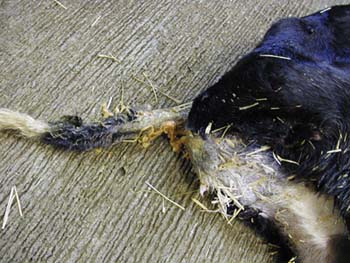 |
When a calf dies from signs of gastrointestinal disease (i.e. scours), you should make note of how long the calf has been ill, and any treatment the calf was given. When performing the necropsy it is important to take multiple samples of the intestine, a fecal sample from the colon (intestine closest to the rectum), and cecal (blind ended pouch before the spiral colon) contents. All of these should be submitted to your veterinarian or diagnostic lab for culture of bacteria, viruses, and parasites. Because there are many tests that can be performed on a sample it is important to take a large sample (approximately 6 inches) and to put each sample in a separate container or bag. Since many of the organisms that cause calf scours are contagious to other calves and to humans it is extremely important to wear protective clothing , including gloves, boots, and coveralls. |
|
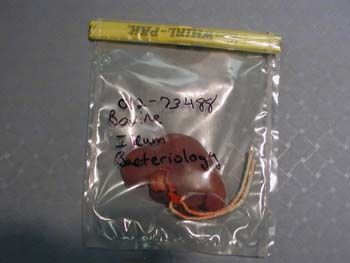 |
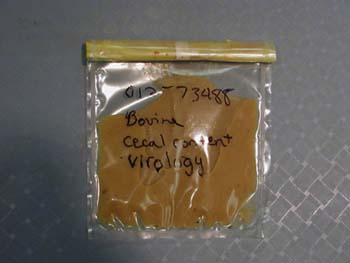 |
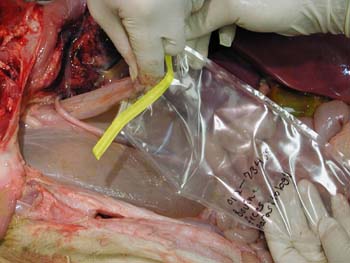 |
|
Collecting samples of the intestine - When collecting a sample of the intestine you will want to cut the intestine away from the connective tissue on the one side of the intestine. The best place to take samples from is called the ileum (the end portion of the small intestine), this section of intestine is closest to the cecum and spiral colon. Once you have cut about 6 inches away from the connective tissue, take a piece of string and tie the intestine in a loop. Once it is tied cut the ends of the intestine, leaving the string with the loop of intestine being sampled. Take at least 3 samples of intestine with this technique and place in a separate container or bag for culture. Be sure to put a piece of intestine in formalin for histology. |
|
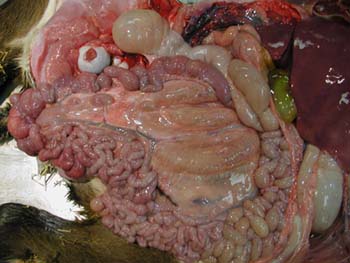 |
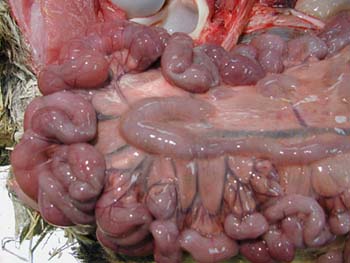 |
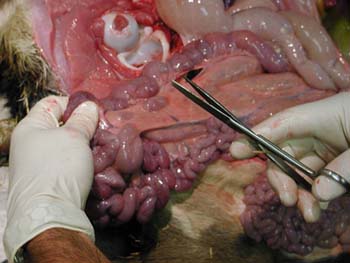 |
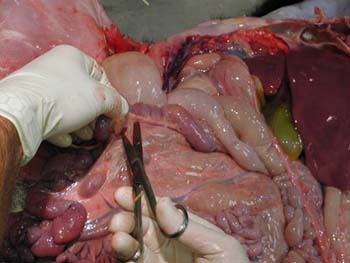 |
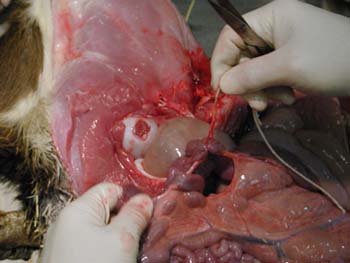 |
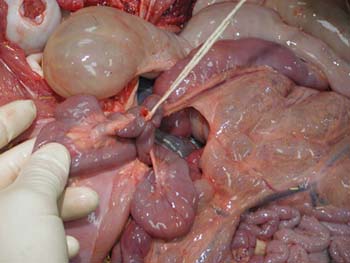 |
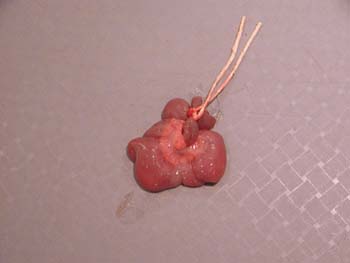 |
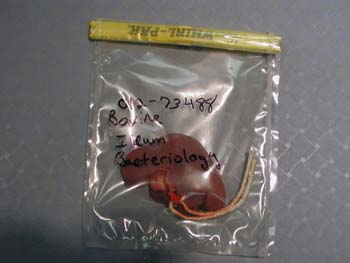 |
Taking a fecal sample - When taking a fecal sample you want to obtain it from the colon, area of intestine closest to the rectum. Cut open the colon and "milk" the contents into a bag. Be sure to label the bag(s) properly with the animals ID and that it is fecal contents. |
|
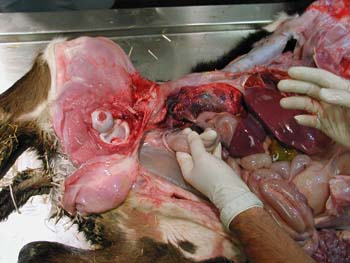 |
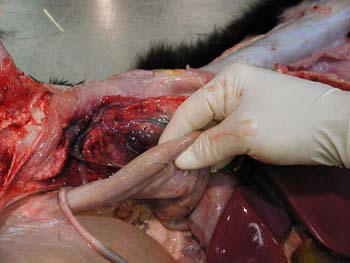 |
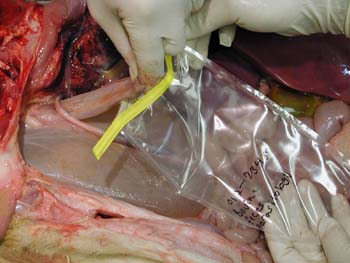 |
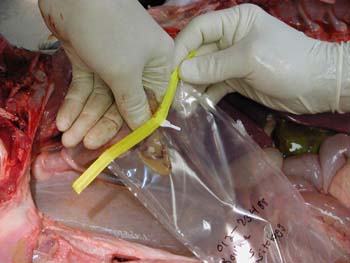 |
Taking a sample of cecal contents - The cecum is a blind ended pouch prior to the spiral colon. This is a good area to obtain a sample of intestinal contents to look for some specific causes of scours. You can either tie off the cecum with a piece of string and send it in that way or cut open the cecum and send in the contents only. Be sure to label the container(s)/bag(s) with the animal ID and that it contains cecal contents. |
|
 |
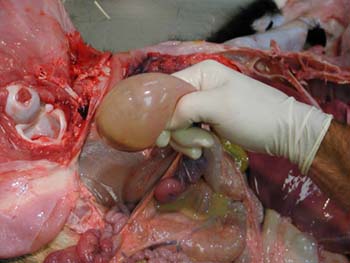 |
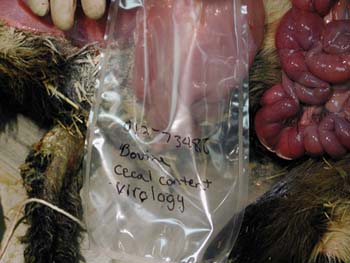 |
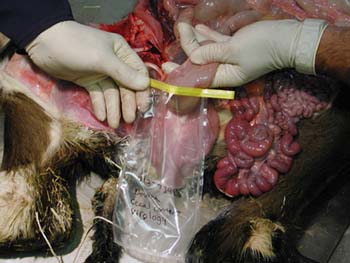 |
 |
 |

